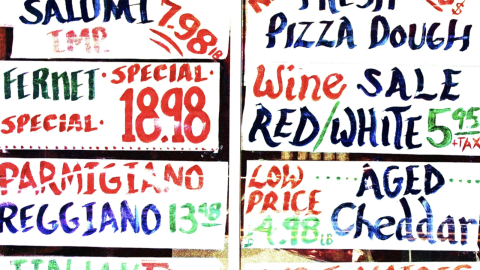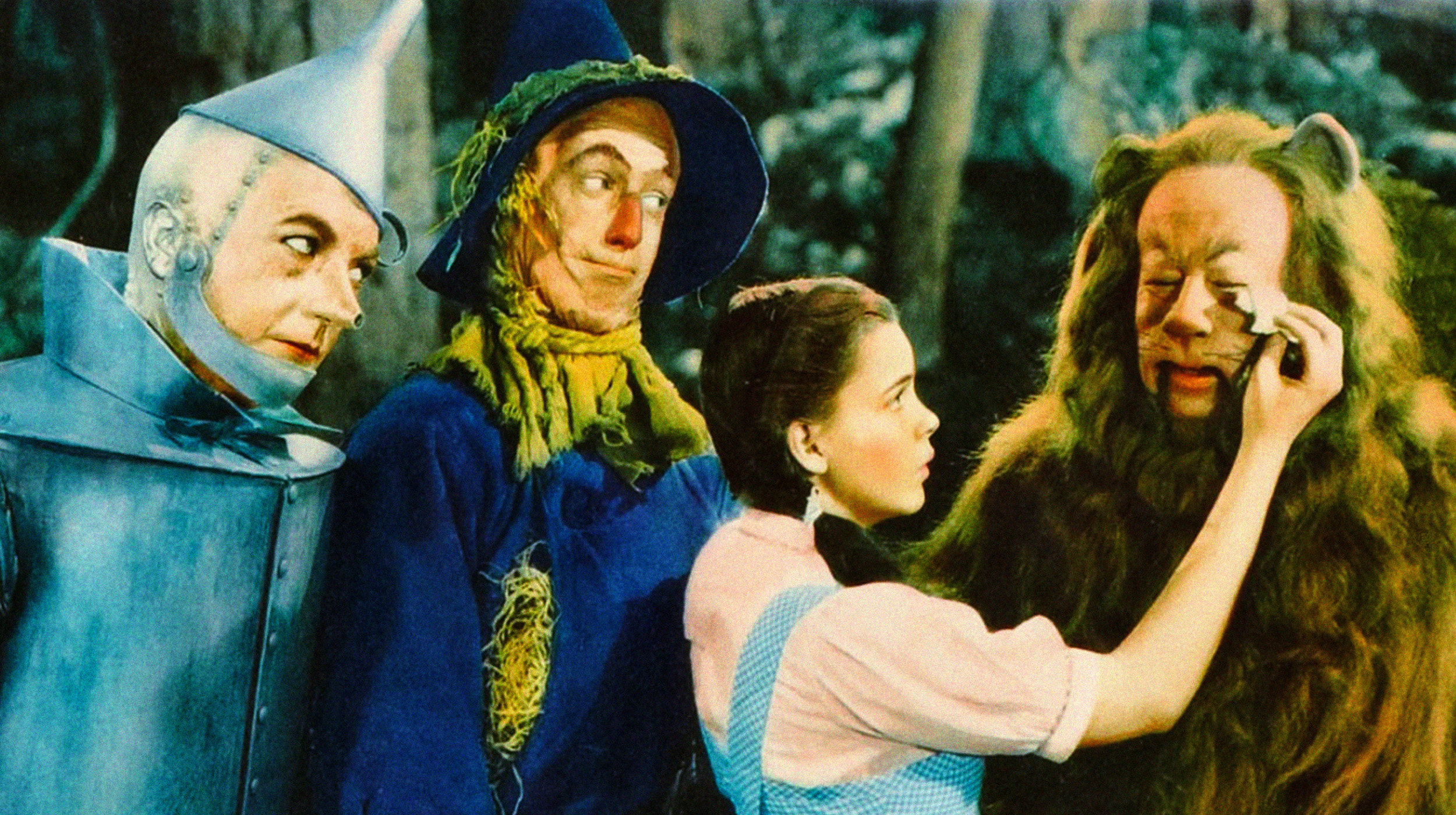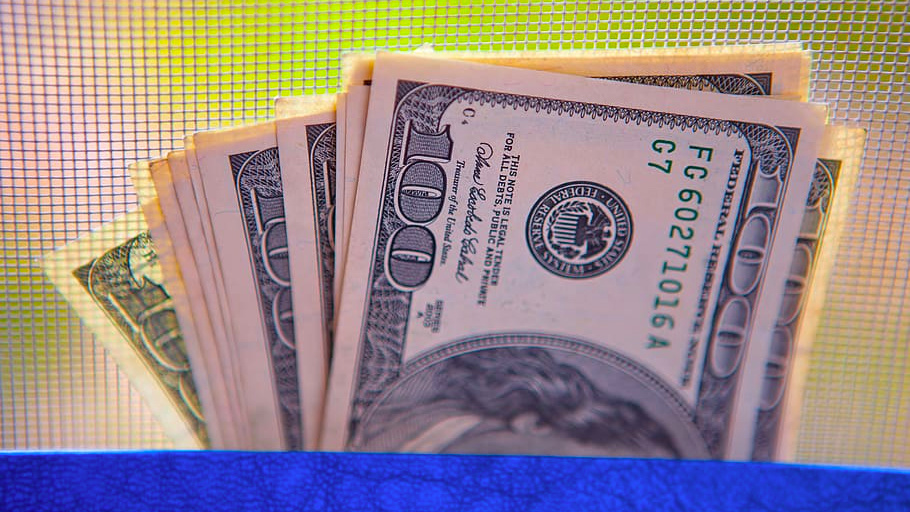$1.99 vs. $2: How our “left-digit bias” makes us overspend

- We all know that retailers try to make the prices of their products more attractive by selling them at $1.99 instead of $2.
- But the power of the brain’s so-called “left-digit bias” may be much stronger than you think, according to a recently published paper in The Review of Economic Studies.
- Biases like these can shape our spending behaviors in a very real way.
Browse through any store or online retailer and you’ll see that prices ending in “.99” are extremely common. It’s a tried-and-true sales tactic that’s been used for at least a century, but does it really work? There’s research suggesting that the brain indeed processes this pricing structure differently. We took a deep dive to understand how it works and how else these kinds of biases impact consumer spending.
What is the left-digit bias?
This pricing strategy goes by many names. It’s sometimes called odd-even pricing because the price tag is a few cents or dollars below a certain price benchmark — like a flat-screen TV advertised for $1,999.99. This strategy, also known as the left-digit bias, leans on the idea that consumers read and process price information in a left-to-right fashion, similar to the way we read text. As a result, the brain might perceive the cost of that flat-screen TV to be more like $1,900 than $2,000.
Research from the University of Missouri found two ways this type of pricing tends to play out for consumers. Let’s say an item is priced at $49.95. Some consumers might pay more attention to those left digits and round the 95 down — perceiving the price as $49. But others might round that 95 ending up to the nearest whole number, which is $50 in this case. As a result, they may perceive that 5-cent difference as a discount and view the item as being bargain-priced or on sale.
Utpal Dholakia, a professor of marketing at Rice University who specializes in pricing and customer experience, describes it like this: “If the right-most digit is a nine, eight, or seven, it doesn’t really matter. The whole point is that the person is paying more attention to the left digit and paying less attention as the number goes more toward the right.”
In other words, $1.97 isn’t much different from $1.98 or $1.99. However, Dholakia says that some consumers indeed pay attention to that final digit and assign symbolic value to it. A 2021 study from researchers at Ohio State University poses the theory that just-below pricing may deter customers from upgrading to a more expensive option. Going from the bargain product to a higher-end option might feel like too big of a leap.
“Going from $19.99 to $25 may seem like it will cost more than going from $20 to $26, even though it is actually less,” the lead author said in a press release.
What it means for retailers
Whether you’re a small business owner, a freelancer, or a consultant, how can you maximize this psychology when setting your prices? According to a 2022 paper published in The Review of Economic Studies, retailers may not be taking full advantage of the left-digit bias.
Study author Avner Strulov-Shlain notes that “consumers respond to a 1-cent increase from a 99-ending price as if it were more than a 20-cent increase.” The paper suggests that companies are forgoing 1% to 4% in potential gross profits because they underestimate the power of the left-digit bias, and therefore fail to price products optimally.
The extent to which companies are underutilizing the left-digit bias remains unclear. According to Dholakia, many retailers seem to be using the left-digit bias strategically, to good effect.
“It’s highly unusual to find all prices in a retail store that have ‘99’ endings, or even ‘9’ endings,” he says. “Retailers typically use this strategy judiciously, so they will choose some items that they want to indicate are on sale as ending in .99 or 9.”
Why? If every item’s price ends in nine, the low-price items you’re trying to spotlight probably won’t stand out as much. Dholakia says it’s wise to include some variation in price endings. Another option is to use nonstandard price endings. Standard price endings are 0, 5, and 9, according to Dholakia. Meanwhile, you can think of 2, 3, 4, 6, 7 (and sometimes 8) as nonstandard endings.
“If a restaurant has an appetizer on sale for $14 instead of $15 or $19, that $14 price communicates a lot of positive attributes, like the seller is cutting edge,” Dholakia says, adding that nonstandard endings are often used to communicate a low price from a higher quality, innovative business.
What to know as a consumer
The left-digit bias has the power to shape consumer spending. It can create the illusion of getting a good deal, even when an item is only marked down by a few dollars or cents. But that can also come back to bite retailers if that perceived discount makes consumers feel hesitant to upgrade to a pricier product. Either way, understanding how retailers use the left-digit bias can help consumers make more informed purchasing decisions.
“The only real answer is that the person has to pay more attention to not fall prey to these pricing tactics,” Dholakia says.
That means being intentional about how you read price tags. If you’re shopping for a big-ticket item, Dholakia says to ask yourself if these pricing strategies make that big of a difference.
“Is it an exorbitantly high price and the retailer is trying to hoodwink you by using a nine at the end?” he asks. “The main point is consumer knowledge and understanding of the price plays a big role in whether they can avoid falling prey to 99 prices.”
Being aware of specific retailer price patterns can also pay off. Dholakia says that Costco is one of his favorite case studies because they have a “very unique price vocabulary.” For example, prices ending in 88 are believed to be on clearance, while prices ending in nine are thought to be regularly priced items.
“It’s a very unique way of using the symbolic value of price,” Dholakia says. “After all, what we’re talking about is that all these numbers have symbolic value that influences customers, and they’re being used by retailers to influence consumers into choosing a particular item.”





